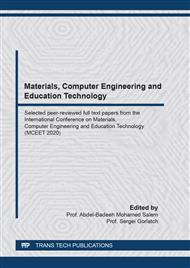[1]
The smart bus control and monitoring system is developed with an aim to make human driving safer and to overcome the accidents. In cities thousands of people commute in buses and many of them travel by standing on the footboard, which risks their own life. The project is developed by integrating load sensor and eye blink sensor with Arduino board. The load sensor is attached to the footboard of the vehicle which detects the presence of the passenger. If the passenger stands on the footboard above the programmed time, the bus gradually stops. The eye blink sensor detects the drowsiness of the driver. When the driver's eyes are closed more than the programmed time, it alerts the driver with buzzer. This system will reduce the manual failures and ensure the passengers safety.
Google Scholar
[2]
The Smart Footboard Accident Anticipation System in buses is the system developed with an aim to prevent the footboard accidents in buses. In cities more than thousands of people commute in buses and almost all are travelling by standing near the footboard, which risks their own life. Even though there are buses with automatic doors, the negligence of both drivers and passengers often results in tragedy. Hence such an automated system which detect passengers' presence on the footboard and restricts the driver from moving the bus. It can be designed, this system from the scratch in such a way that the whole system is quite modular so that it can be easily add extra features to the system such as tamper-proofing, extending the system with retarder etc. This system can save many precious lives in their day to day commutation.
Google Scholar
[3]
A major portion of the population relies on the public transport, particularly buses, for their day-to-day travel. This results in fatal accidents of the passengers especially during travelling in the footboard of the buses. Therefore, there is a need for an automatic footboard accident prevention system in buses for ensuring the passenger safety. The present work, automatic footboard accident prevention system is carried out to ensure the safety of the passengers from accidents during travelling in the buses. The present system comprises of an ultrasonic sensor, Hall Effect sensor, accelerator pedal locking system and alarm indication system. The ultrasonic sensor is attached to the side walls of the footboard of the buses to detect the presence of passengers. The Hall Effect sensor is fixed on the steering arm of the front left wheel to detect the motion of the bus. A signal from the ultrasonic sensor and Hall Effect sensor enables the accelerator pedal locking system, to restrict the movement of the bus. The signals are also sent to the alarm indication system to warn the driver and the passengers. This present system ensures the safety of the passengers during boarding and de-boarding of the buses by preventing the acceleration of the buses if there is any passenger on the footboard during the stationary position of the bus. The hardware of the above system occupies only less space and consumes lesser power.
Google Scholar
[1]
Mrs. A. Geetha M.E, Ph.D, Ms. G. karthika, Ms. M. Shivani, Ms. R. Vasanthi, Smart Bus Control and Monitoring System, International Journal of Advanced Research Trends in Engineering and Technology Vol. 5, Special Issue 13, March (2018).
Google Scholar
[2]
Dr. G. Kalivarathan, R. PremSankar, Rohith Rajeev, Intelligent Footboard Accident Prevention System in Buses, International Journal of Advanced Research in Biology, Ecology, Science and Technology Vol. 1, Issue 2, May (2015).
Google Scholar
[3]
K. Vigneshwaran, M. Kanthababu, Design and Development of Automatic Footboard Accident Prevention System, International Journal of Innovative Research in Science, Engineering and Technology Vol. 6, Issue, May2017.
Google Scholar
[4]
S. Rohit, Shriram K. Vasudevan, S. Lokesh, K. Ajeeth and Vineet Nair An Intelligent and Cost Effective Footboard Accident Prevention System, Information Technology Journal 12 (11): 2265-2268, (2013).
DOI: 10.3923/itj.2013.2265.2268
Google Scholar
[5]
R. Jayalakshmi and K. Haripriya, Driver Assist System (DAS) to Prevent Road Accidents,, International Journal on Recent and Innovation Trends inComputingandCommunication, Vol. 3, Issue3, p.1613 – 1616,(2011).
DOI: 10.17762/ijritcc2321-8169.1503156
Google Scholar
[6]
Nishad Vivek Kumbhojkar & Chaitanya A vadhutchintan Kuber, Ultrasonic Automatic Braking System for Forward Collision Avoidance with Accelerator Pedal Disengagement Mechanism,, (Posted byYuva Engineers on January 22nd), 2014; Vol 1, pp.1-5.
Google Scholar
[7]
Lu Guonian, Ye Chun, Sun Rujiang, Equipment using ultrasonic detector to record passenger throughput of bus,, Chinese Patent, Application number – CN 1360288A.
Google Scholar
[8]
S. Arun Kumar; A. Kumaresan,Towards building intelligent systems to enhance the child safety and security,, IEEE Conference, (2017).
DOI: 10.1109/i2c2.2017.8321896
Google Scholar


